2021 LAF Innovation + Leadership Symposium

This two-part virtual event showcased leading-edge thinking in landscape architecture to address a breadth of pressing issues.
The six 2020-2021 LAF Fellowship for Innovation and Leadership recipients presented their projects on energy justice, landscape ethics in California's breadbasket, re-imagining flood control in San Juan, designing for and with the disabled community, water networks in Bogotá, and designing with animals.
Tuesday, June 15, 2021
Featuring: Edmundo Colón Izquierdo, Andrea Johnson, and Diego Bermúdez
Thursday, June 17, 2021
Featuring: Alison Hirsch, Alexa Vaughn, and Roxi Thoren
Event Sponsors
-

Title Sponsor
-

Major Sponsor
-

Major Sponsor
Watch the Presentations and Symposium Recordings
The full 1.5-hour event recordings from each day as well as each Fellow's ~15-minute presentation can be viewed on demand. By watching Part 1 or Part 2 of the symposium (or the component presentations), you can earn 1.5 PDH (LA CES/HSW) following successful completion of a short quiz.
If your design firm, organization, class, or student group is interested in viewing the symposium or its component presentations, we've created a discussion guide to help prompt follow-up conversations around themes of climate change adaptation, environmental justice, and inclusive design. Groups can view the videos on their own or watch together, then dedicate time during their next meeting or class to talk through the points on the discussion guide.
The symposium is the culmination of the year-long LAF Fellowship for Innovation and Leadership, and each day featured presentations from three of the Fellows.
Schedule
Symposium, 3:00-4:30pm EDT
3:00pm Welcome and Opening Remarks
3:15pm Presentations
4:00pm Panel Discussion and Moderated Audience Q&A
4:25pm Closing Remarks
June 15 Presentations
El Río está vivo… y nadie lo sabe!: Re-envisioning Flood Control in the Río Piedras Watershed
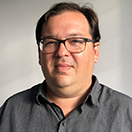 Edmundo Colón Izquierdo, Principal, ECo, San Juan, Puerto Rico
Edmundo Colón Izquierdo, Principal, ECo, San Juan, Puerto Rico
The Rio Piedras, in San Juan, Puerto Rico, is undergoing major transformation, changing from a natural soft bottom biodiverse river to a concrete lined channel, a single purpose piece of infrastructure. With enough funding from federal sources, can this project by the US Army Corps of Engineers become a model for next-generation multi-benefit flood management infrastructure? Will landscape architects lead the way? Learn More
Redistributing Power: Energy Justice Beyond Kilowatt Hours
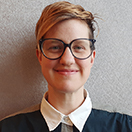
Andrea Johnson, Visiting Assistant Professor, Rhode Island School of Design (formerly with Terreform Center for Advanced Urban Research and The City College of New York)
Confronted with the uncertainty of climate change and rising inequality, Andrea’s project explores the role of landscape architecture in emerging renewable energy networks. Using NYC as a springboard, Andrea has produced a set of design scenarios that seek to reinforce environmental justice movements and reimagine distributed energy production and storage at the neighborhood scale. Learn More
Redrawing Infrastructure: 2500 Years of Water Management
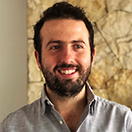
Diego Bermúdez, Principal and Partner, Bermúdez Arquitectos, Bogotá, Colombia
The pre-Hispanic Muisca settlers of Funza engineered and inhabited the flood plains along the Bogotá River in Colombia. Colonial interventions understood land as separated from water, overlooking local traditions and ecologies. In the 1920s, a water management system was built to dry out the land. Diego presents a re-imagined water network that encourages biodiversity and preserves adjacent structures that reflect elements of local cultural, social, economic, and political history. Learn More
June 17 Presentations
Landscape and ‘the Working Country’: Food Justice and Landscape Ethics in California’s Central Valley

Alison Hirsch, Associate Professor and Program Director, University of Southern California
This project considers cultural theorist Raymond Williams’ oft-cited claim that “A working country is hardly ever a landscape” through a close examination of land and agricultural labor in the San Joaquin Valley, the southern portion of California’s 430 mile-long Great Central Valley. The project interprets the valley’s environmental and cultural histories and practices through sustained forms of action research in an effort to ultimately arrive at visions for the future. Learn More
Design with Disabled People Now: Including Disabled People in the Design Process
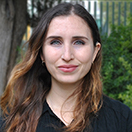
Alexa Vaughn-Brainard, Landscape Designer and Access Specialist, MIG (formerly Landscape Designer, OLIN), Los Angeles, California
Despite increasing attention to diversity, equity, and inclusion in landscape architecture, the disabled community remains overlooked. We can no longer design for the disabled community without its members. As a Deaf woman of the post-ADA generation, Alexa’s design toolkits push beyond the minimum requirements set by ADA guidelines to facilitate a process that is more inclusive of the disabled community and aids in the creation of a more accessible and beautiful public realm. Learn More
Including Animals: Co-creating with Our More-Than-Human Neighbors
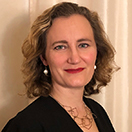
Roxi Thoren, Department Head and Professor of Landscape Architecture, The Pennsylvania State University (formerly Associate Professor and Department Head, University of Oregon)
Adapting our environments to the new, and rapidly changing, climate normal is going to take all hands on deck and inter-species creativity. How can landscape architects change our education, our language, and our practices to collaborate with our non-human community members? What do we need to know and do to imagine animals’ world-making capacities and collaboratively design with their environmental agency?












